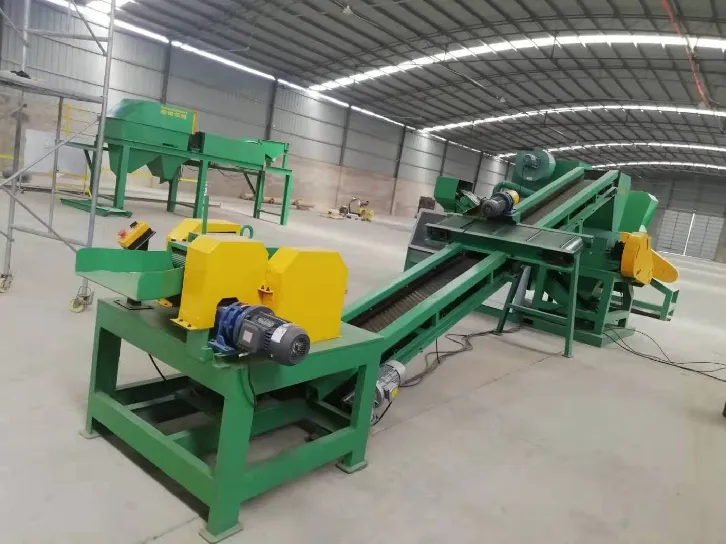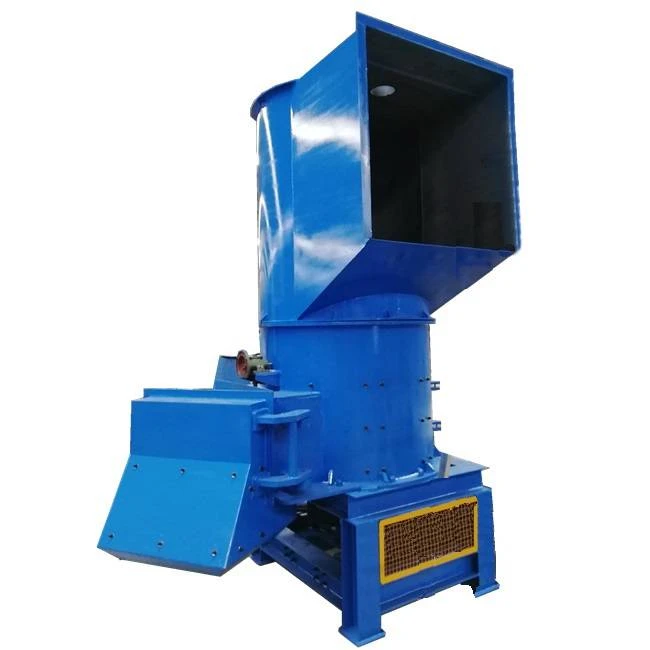

Jun . 24, 2025 05:20 Back to list

(eddy current separator video)
Today, the increasing demand for effective metal sorting has pushed industries to explore advanced separation technologies. Eddy current separator video resources have become crucial, enabling technical teams and decision-makers to observe real-world machine performance prior to purchase. These videos are more than marketing tools; they offer compelling evidence of efficiency, process reliability, and outcomes—factors vital for modern waste and recycling operations. As the global metal recycling market reached USD 346.86 billion in 2023, with an expected CAGR of 6.2% through 2030, visual demonstrations through Video assets are shaping purchase decisions and fostering technology adoption. Understanding the content and comparative value within each eddy current separator video
serves as a foundation for industrial innovation.
Eddy current separators work on electromagnetic induction principles, effectively ejecting non-ferrous metals from waste streams. The core mechanism involves a fast-rotating magnet drum that produces rapidly alternating magnetic fields. Conductive non-ferrous particles, like aluminum, copper, or brass, respond to these fields by generating eddy currents—causing them to be repelled into a designated output zone.
The latest separator models integrate high-gradient neodymium magnets, boasting field strengths upwards of 1.2 Tesla. Such intensity promotes targeted separation, reducing contamination to levels as low as 0.2%. This directly impacts the purity of the recovered material and translates into significant cost savings downstream. Operational throughput in modern units often exceeds 180 tons per hour, supported by real-time automation and AI-powered belt tracking, minimizing manual oversight and process downtime. When contrasted with conventional methods, these separators consistently elevate output quality, energy efficiency, and maintenance simplicity—delivering up to a 15% improvement in separation yield according to third-party test data.
Market analytics underscore the surge in demand for efficient metal separation technology across e-waste processing, municipal solid waste (MSW) facilities, and end-of-life vehicle dismantling. According to a 2023 survey from Global Industrial Insights, over 70% of new recycling facilities specified eddy current separators as a core requirement. These installations were found to reduce post-processing waste by a median of 18% and increase non-ferrous recovery rates up to 97%. In addition, high-speed metal shredder video reviews compared feedstock before and after separation, clearly documenting a 40–55% reduction in visible non-ferrous contamination.
Data-driven optimization is further empowering operators. For example, integrated data logging in separator controllers now enables performance mapping against diverse waste streams, helping to fine-tune magnet rpm, belt speed, and splitter positioning. This increases overall OEE (Overall Equipment Effectiveness), with several facilities reporting a jump from 72% to over 89% equipment utilization post separator implementation.
Selecting the right eddy current separator goes beyond simple cost consideration. Industrial purchasers must weigh throughput, separation efficiency, machine footprint, control system sophistication, and total cost of ownership (TCO). Below is a comparative table featuring three top-tier manufacturers:
| Feature | Brand A | Brand B | Brand C |
|---|---|---|---|
| Throughput (Tons/Hour) | 150 | 180 | 170 |
| Efficiency (% Recovery) | 92.5 | 97 | 94 |
| Magnet System | Ferrite/Neodymium Hybrid | Pure Neodymium Grade N52 | Neodymium NdFeB |
| Automation Level | Manual Settings/Feedback Display | AI Adaptive/Remote Monitoring | Programmable Logic Controller (PLC) |
| Footprint (m²) | 15 | 13 | 11.5 |
| TCO (5 Years, USD) | $185,000 | $215,000 | $177,000 |
This table demonstrates that while Brand B commands a higher investment, it consistently delivers top range efficiency and advanced automation, which may offer a more favorable ROI for larger or highly automated facilities. For operators with space or budget constraints, Brand C presents a more compact yet competitive option. Reviewing an eddy current separator video provided by each manufacturer can visually affirm performance claims and support an informed procurement decision.
The adaptability of eddy current separation solutions is a key growth driver across industries. Leading suppliers offer modular configurations, enabling integration with conveyors, infeed hoppers, and dust extraction systems. For instance, custom magnet drum diameters can be specified from 300–700 mm depending on bulk density and particle size distribution.
Sensor-based splitters and programmable digital touchscreens optimize the separation process for metals with varying conductivity values, such as fine copper granulate versus large aluminum can bodies. Thermal management upgrades—like active air or water cooling—are possible for operations in high ambient temperature regions. Furthermore, anti-fouling coatings and enhanced abrasion-resistant belts extend operational lifetime, preventing costly unscheduled downtime.
The process of tailoring a solution is increasingly data driven. Live system feedback and AI-assisted process automation are now routinely included at the request of forward-thinking customers. This ensures both current and future material streams are effectively handled, amplifying long-term value from a capital investment perspective.
The practical deployment of eddy current separators spans numerous industrial environments. In municipal recycling centers, a leading facility processed 1,200 tons of mixed recyclables weekly and reported an increase in aluminum recovery by 143 tons per quarter after separator installation. Their metal shredder video footage documented a visible reduction in waste residue and higher bale purity.
In another case, a European automotive dismantler adopted a dual-separator line, boosting copper recovery from shredded cable by 19% over baseline. The captured data revealed a net reduction in landfill-bound waste and regulatory compliance improvement. An electronics recycling organization implemented a high-frequency separator configured for circuit board fragments, achieving 96% precision in tin and silver separation—validating the solution’s value through side-by-side process videos and output analysis.
These case studies, routinely shared through Video walkthroughs, highlight real-world performance metrics and problem-solving benefits, proving the importance of live demonstrations in the technology evaluation journey.
In summary, the widespread use of eddy current separator video content represents a strategic leap in industrial education and procurement. Far from being just marketing collateral, these videos deliver substantive insights—showcasing technical prowess, operational outcomes, and post-installation benefits with unprecedented transparency. The combination of quantifiable data, manufacturer innovation, and visual validation aligns stakeholders, accelerates adoption, and establishes new standards for metal recovery across a spectrum of sectors. As market dynamics evolve, industries committed to sustainable, high-yield recycling will continue relying on Video proof points to inform equipment selection and process optimization, paving the way for smarter, data-driven facility investments.

(eddy current separator video)
Latest news
Troubleshooting Common Eddy Separator Problems
NewsJul.04,2025
The Role of Metal Recycling Plants in Circular Economy
NewsJul.04,2025
The Impact of Recycling Line Pickers on Waste Management Costs
NewsJul.04,2025
Safety Features Every Metal Shredder Should Have
NewsJul.04,2025
How Industrial Shredders Improve Waste Management Systems
NewsJul.04,2025
How Cable Granulators Contribute to Sustainable Recycling
NewsJul.04,2025